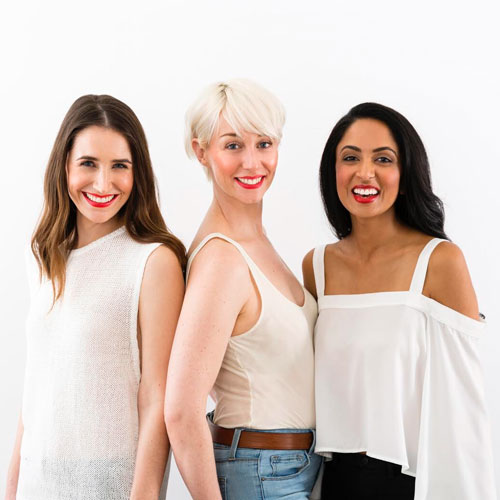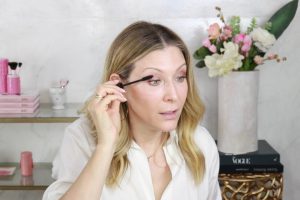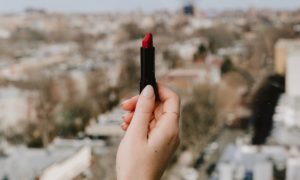Most recently updated 1/12/21
We’ve all seen the effects of Botox. The smooth-as-glass foreheads. The wrinkle-free smiles. The eyebrows that don’t lift all the way – and the eyebrows that stay oddly lifted. But what is it exactly? And how does it work?
Here’s what we learned when we reached out to our friend and confidant, Dr. Ilene Ruhoy, a board-certified neurologist trained in integrative medicine and environmental toxicology.
What is Botox?
“Botox is an injectable lab-made drug that’s made from botulinum toxin,” Dr. Ruhoy explains. “Cosmetically, the toxin reduces wrinkles. What happens scientifically is slightly more complicated. The toxin inhibits the release of a substance called acetylcholine, which causes muscle paralysis.”
Ummm, muscle paralysis? Is that safe?
This, plus about a hundred other questions, took us down a Botox rabbit hole where we learned what it is, where it comes from, how long it lasts, how much it costs, and if there are other cleaner alternatives to reduce wrinkles and fine lines that don’t include, well, muscle paralysis.
Where does Botox come from?
According to Dr. Ruhoy, “Botox is made from botulinum toxin, a potent neurotoxin that is produced by Clostridum botulinum.” This bacterium is found in the natural environment – in soil, lakes, and forests, in the intestinal tracts of mammals and fish, and in the gills and organs of crabs and other shellfish [1].
For the most part, Clostridium botulinum bacteria is considered harmless. But if the spores transform into vegetative cells, the bacteria can start producing botulinum toxin, which is responsible for botulism [1].
What is botulism, you ask? It’s a rare – but very serious – illness transmitted through food, contact with contaminated soil, or through an open wound that can lead to paralysis, breathing difficulties, and death [2].
And people inject this in their FACES?
Yes, they most certainly do. Botulinum toxin is injected with a needle into the skin to reduce fine lines and wrinkles by paralyzing the underlying muscles. With over 6 million Botox treatments administered each year, it’s the most popular non-surgical cosmetic treatment on the market today.
People also use Botox to treat over 20 different medical conditions, including excessive sweating, migraines, eye squints, muscular disorders, and some bladder and bowel disorders [1]. And doctors and scientist are exploring additional applications as you read this very line.
Does Botox have major side effects?
Botulinum toxin is extremely powerful. However, because botulinum toxin is injected into people in such small concentrations, it’s considered safe.
As Dr. Ruhoy points out, “When used in a medical office for cosmetic procedures, it’s greatly diluted, injected in small doses, and only into superficial muscles. Wrinkles often come from the contraction of underlying facial muscles. So when muscles relax, wrinkles are reduced.”
In terms of side effects, Dr. Ruhoy tells us, “There are potential side effects that are related to either too much Botox, or incorrect placement of Botox. This can result in weakness and paralysis of a facial muscle. But these effects aren’t permanent, and will usually resolve in 3 months.”
Phew!
“More serious side effects are related to the spread of the toxin. That’s why patients are often advised not to rub their face for 24-48 hours following injection. If the toxin were to spread, side effects can include difficulty swallowing, double vision, hoarseness, and difficulty speaking. In rare cases, spread can cause botulism which can result loss of strength and muscle weakness all over the body, bladder dysfunction, and respiratory distress. When administered by qualified physicians though, risks and side effects are rare.”
In fact, only 36 cases of adverse effects associated with cosmetic use were reported to the U. S. Food and Drug Administration (FDA) between 1989 and 2003 [2].
How does Botox fight wrinkles?
First, a lesson in wrinkles! Wrinkles are the result of lack of moisture and elasticity of the skin – which go hand in hand with age. Your skin naturally contains collagen and elastin, both of which make your skin firm and supple. Your skin also contains GAGs or glycosaminoglycans, which helps keep your skin hydrated. Around age twenty, your body starts to produce less of these skin-firming components. By midlife, wrinkles and fine lines are more apparent [5].
We etch fine lines and wrinkles into our faces by contracting our muscle cells repeatedly. If you consistently squint, smile, furrow your brows or raise them in surprise, you probably have some wrinkles to show for it.
Now for a bit of science. For muscles to contract, nerves release a chemical messenger, acetylcholine, where the nerve endings meet muscle cells. Acetylcholine attaches to receptors on the muscle cells and causes the muscle cells to contract or shorten.
Injected botulinum toxin prevents the release of acetylcholine, preventing contraction of the muscle cells [1].
So yes, again, Botox paralyzes facial muscles. But only temporarily.
How long does Botox last?
Botox works differently on every person, but on average, it lasts between three to six months.
For first-time Botox users, the effects will likely wear off faster because muscles aren’t yet conditioned to respond to the botulinum toxin. Effects last longer after a few sessions since muscles stop repeatedly contracting and the skin has more time to regenerate the collagen it needs to fill in those lines and wrinkles [4].
How much does it cost?
The answer to this question varies widely. It depends on your geographic location, the clinic you choose, the person who injects you, and the type and depth of your wrinkles, which impacts the number of Botox units required.
On average, Botox costs between $10-$20 per unit. But different regions of your face require different numbers of units.
- The glabella region, which makes up the vertical lines between the eyebrows, (sometimes called 11s) usually requires between 20 to 35 units of Botox ($200+ per procedure).
- The frontalis muscle, which creates the horizontal forehead lines, typically needs between six to 20 units ($60+ per procedure).
- Crow’s feet around the eyes tend to call for six to 15 units ($60+ per procedure) [3]
Multiply the number of units by the cost per unit and that’s your total!
Can pregnant or breastfeeding women use Botox?
Doctors don’t recommend it because they haven’t tested the effects on babies. And they likely never will. However, because Botox is localized, it’s not likely that the toxin in one’s forehead would affect the baby in one’s womb. We say better safe than sorry!
Does Botox go by any other name?
You bet. Botulinum toxin is sold commercially under the names Botox, Vistabel, Dysport, Bocouture, Xeomin, and Myobloc [1].
Are there natural ways to reduce wrinkles?
Absolutely. There plenty of environmental factors that we can control to reduce fine lines and wrinkles.
1) Put on sunscreen free of harmful chemicals every single day.
Reduce wrinkles, aging spots, and sagging skin by slathering on sunscreen. Go for 50 SPF or higher. Choose mineral sunscreens — with zinc oxide or titanium dioxide as the active ingredient — rather than chemical sunscreens, which can harm your health and destroy coral reefs.
2) Use natural moisturizers.
Yes to coconut oil, argan oil, jojoba oil, sunflower oil, and olive oil. These natural moisturizers are great for hydrating skin.
3) Quit smoking cigarettes.
Smoking strips essential antioxidants that are vital for skin health, speeding up the normal aging process [5]. But you’re not still smoking, right? We didn’t think so!
4) Drink plenty of fluids, get plenty of sleep, and read up on other Natural Ways to Get Gorgeous Glowy Skin right here.
Get “shockingly accurate” clean beauty picks. Take your beauty assessment.
This post has been reviewed by Ilene Ruhoy, M.D., neurologist, and PhD in Environmental Toxicology.
References
- For further reading on how Botox is made:
https://www.medicalnewstoday.com/articles/158647.php - For further reading on botulism:
https://www.healthline.com/health/botulism - For further reading on how much Botox costs:
https://www.skinbylovely.com/how-many-units-of-botox-will-i-need/ - For further reading on how long Botox lasts:
https://www.zwivel.com/blog/how-long-does-botox-last-faqs/
https://www.77plasticsurgery.com/blog/tips-reduce-facial-wrinkles-naturally-without-surgery






Comments